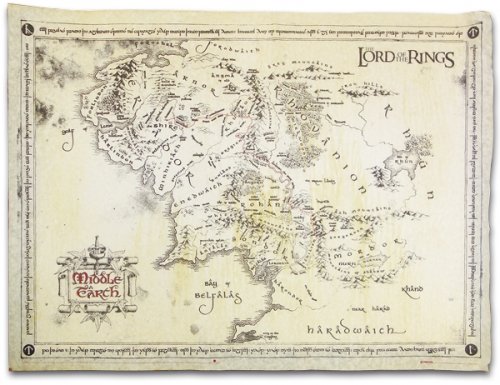More of the Same?
For the most part, Crown of Midnight (Throne of Glass #2) by Sarah J. Maas creates a world that exhibits the common tropes of fantasy literature. Specifically, a fictitious world in which society functions in many ways like earth during the middle ages, augmented with a splash of magic, a dash of sorcery, and a mythical monster or two. Does this description sound familiar? It certainly will to fans of the fantasy genre; ever since J.R.R. Tolkien published The Hobbit in 1937 and the subsequent The Lord of the Rings trilogy in the 1950's, the majority fantasy novels have fit the mold Tolkien cast and most writers of fantasy stand in his long shadow. To be fair, Tolkien himself borrowed many of his ideas from mythology (check out this article by Martin Wettstein to see the many connections between Tolkien and Norse myth) and even some previous works of fiction, but he set the all-too-familiar narrative of a hero or a group of heroes, setting out on a quest against evil in a wondrous, magical world.
 Cover art for Crown of Midnight
Upon cracking the cover of Crown of Midnight one finds a map of such a world--Erilea (top)-- drawn, in many ways much like the maps Tolkien drew for for his creation: Middle Earth (bottom). There are strikingly familiar features in Maas' map: mountain ranges, deep dark forests, and an especially unfortunate similarity: both have an area on the map referencing a "witch king."
Cover art for Crown of Midnight
Upon cracking the cover of Crown of Midnight one finds a map of such a world--Erilea (top)-- drawn, in many ways much like the maps Tolkien drew for for his creation: Middle Earth (bottom). There are strikingly familiar features in Maas' map: mountain ranges, deep dark forests, and an especially unfortunate similarity: both have an area on the map referencing a "witch king." 
The Good Stuff:
Despite the problem of derivative commonality that practically all fantasy writers suffer from, Crown of Midnight is a well-told and entertaining story. The second in the Throne of Glass Series, the story quickly gets the reader up to speed our heroin--Celaena's--history. Previously a prisoner, the teenage assassin Celaena outwitted her opponents in a deadly game in the previous novel, and now holds the title "King's Champion." However, Celaena's title and new-found prestige comes at a high cost. Despite an aptitude for violence, incredible fighting abilities, and the use of magic, Celaena doesn't quite have the heart of an assassin. In fact, she hates the very king she champions, and secretly hopes to depose him. Rather than eliminating the targets given by the truly sinister King of Ardalan, she uses a wit sharpened by a life of peril to stage fake killings--going as far as bringing her king a severed finger (signet ring attached) of a corpse rather than her mark. Furthermore the magic Celaena possesses is strictly outlawed, and any sign of it would surely result in her death. These elements serve as constant dangerous to Celaena, and Maas succeeds in making the reader truly feel conflicted and on edge as we follow the assassin's adventures.
An added element of suspense takes form in the machinations of a court where cloak and dagger intrigue abounds. What truly makes Crown of Midnight stand out is the inclusion of strong supporting characters, some of whom charm both the reader and Celaena with their charisma, even while representing the den of vipers that the court truly consists of.
Ultimately, fans of fantasy who aren't put-off by the tired sword-in-hand elements of the genre will enjoy Crown of Midnight, and even if you are inclined to notice Tolkienesque influences, the riveting and at times, surprising story will make it worth any reader's time.
1 comment:
This is an interesting analysis. I like how you compared Tolkien with this book. It gives a feel for people who are familiar with Tolkien of what this book is like. Great description of the story and the characters even your opinion of the story being tired.
Post a Comment